Mark Bradford (b. 1961) is a groundbreaking mixed-media artist whose innovative practice transforms discarded, everyday materials into complex, layered canvases that critique and reinterpret the social and physical landscapes of urban America. By reconfiguring found materials, from billboard remnants to scraps of commercial paper, Bradford creates works that interrogate race, class, and identity while re-mapping the histories and futures of his city.
Mark Bradford was born in Los Angeles in 1961 and raised in South Los Angeles, an area marked by both cultural vibrancy and socioeconomic challenges. Growing up in a neighborhood where the stark contrasts between wealth and poverty were evident, Bradford witnessed the physical remnants of urban life; layers of commercial advertising, neglected infrastructure, and the detritus of consumer culture. This environment instilled in him a deep, personal desire to “re-map” the social and physical landscapes that surrounded him. According to Encyclopædia Britannica, these early experiences laid the groundwork for his critical and creative vision (Britannica).
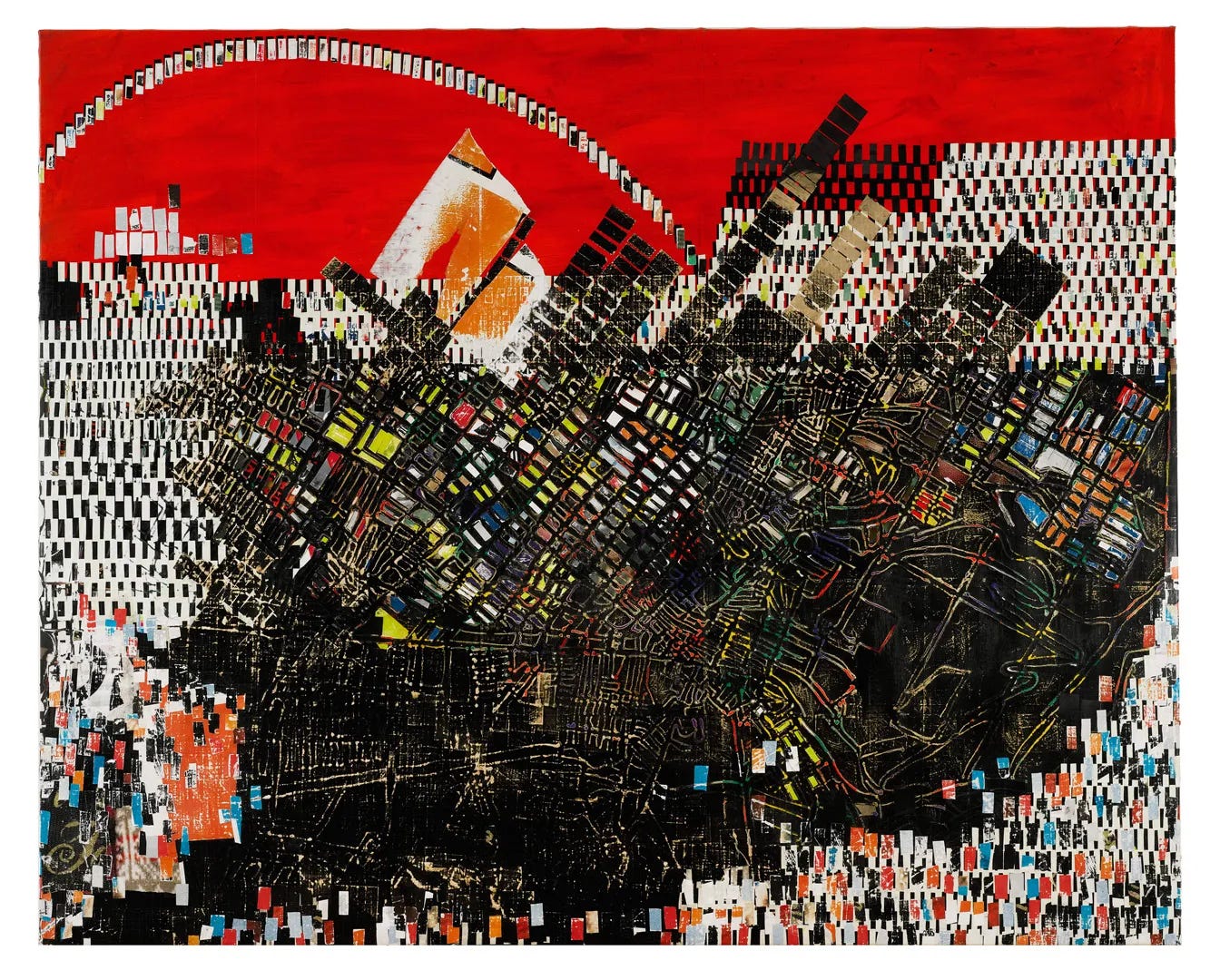
Bradford’s upbringing in South Los Angeles exposed him to the dynamic interplay of urban decay and renewal, igniting his interest in how cities leave behind traces of their histories. This firsthand experience of urban contrasts drove him to explore how the discarded materials of everyday life could be transformed into layered narratives that reflect both the beauty and the challenges of his environment (Whitney Museum).
Bradford’s work is distinguished by his innovative use of found materials as the foundation for his large-scale, abstract paintings. He collects scraps of paper, billboard remnants, and other urban detritus from commercial sources, materials that already bear the traces of their past use, and transforms them into textured, multi-layered canvases through a process of collage, layering, and overpainting. The Museum of Modern Art (MoMA) describes how this process challenges traditional painting techniques while embedding his work with the lived history of the urban landscape (MoMA).
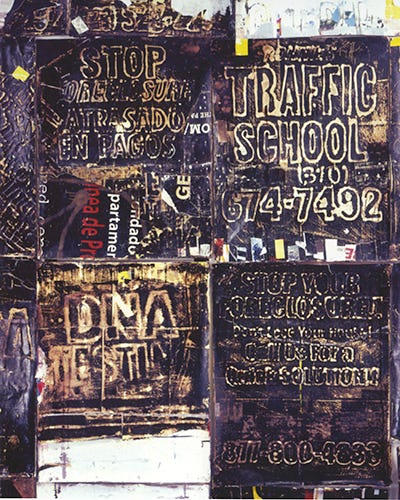
The Tate further explains that Bradford’s canvases function as “palimpsests,” where each layer of material records a fragment of the city’s history, reflecting both its beauty and decay (Tate). By deconstructing and reassembling these materials, Bradford reclaims what society has discarded, turning it into art that serves as a physical archive of modern urban life.
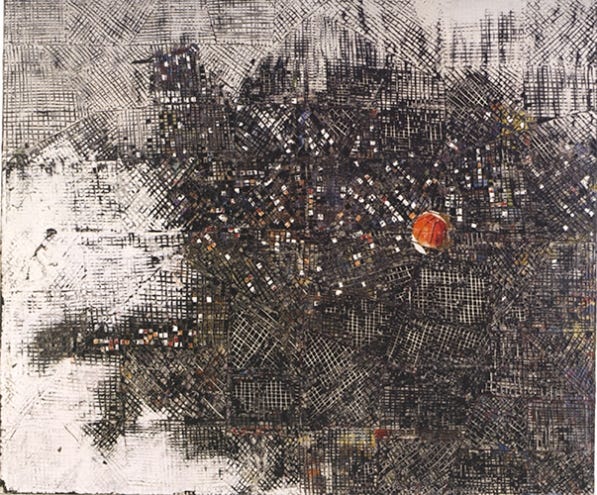
At the heart of Bradford’s work lies a powerful social commentary on the urban experience, particularly the effects of systemic inequities and racial segregation. His abstract forms and textured surfaces suggest that the urban landscape is not merely a physical space, but a repository of collective memory and social struggle. As discussed on Art21, Bradford’s compositions encourage viewers to reconsider the often-overlooked narratives embedded within the urban fabric (Art21).
Bradford’s paintings often evoke the “invisible” infrastructures of power; remnants of consumer culture and the detritus of neglected communities that serve as silent markers of socio-economic disparity. In a 2012 review in The New York Times, Jill Steinhauer described Bradford’s work as a “re-mapping” of the city, where layers of advertising and urban decay reveal the hidden histories of its inhabitants (Steinhauer). His art critiques economic and racial inequalities, challenging viewers to question which aspects of the city’s history are celebrated and which are forgotten.
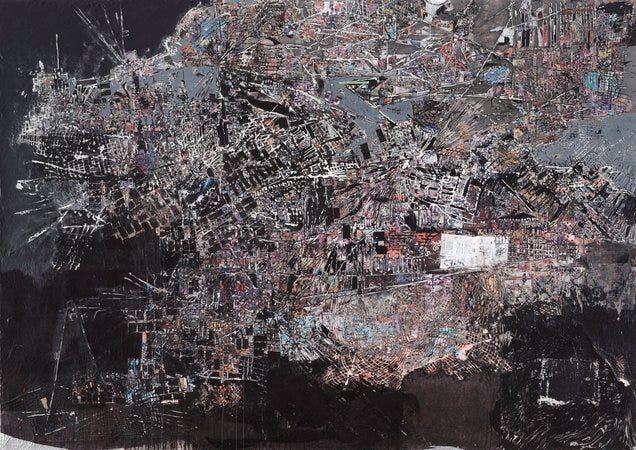
Bradford’s contributions have been showcased in numerous high-profile exhibitions at institutions around the world. His solo shows at the Museum of Modern Art (MoMA), Tate Modern, and the Guggenheim Museum have underscored both his technical innovation and his engagement with social issues. The Guggenheim Museum notes that his work “transcends traditional boundaries of abstract art,” emphasizing its critical relevance in contemporary discourse (Guggenheim Museum).
In addition, Bradford has received significant recognition and prestigious awards. The MacArthur Foundation awarded him the “Genius Grant” for his visionary approach to art-making and his transformative use of found materials (“MacArthur Fellows Program: Mark Bradford”). The Whitney Museum of American Art also highlights his role as a key figure in contemporary abstraction, recognizing how his art redefines the visual language of urban environments (Whitney Museum).
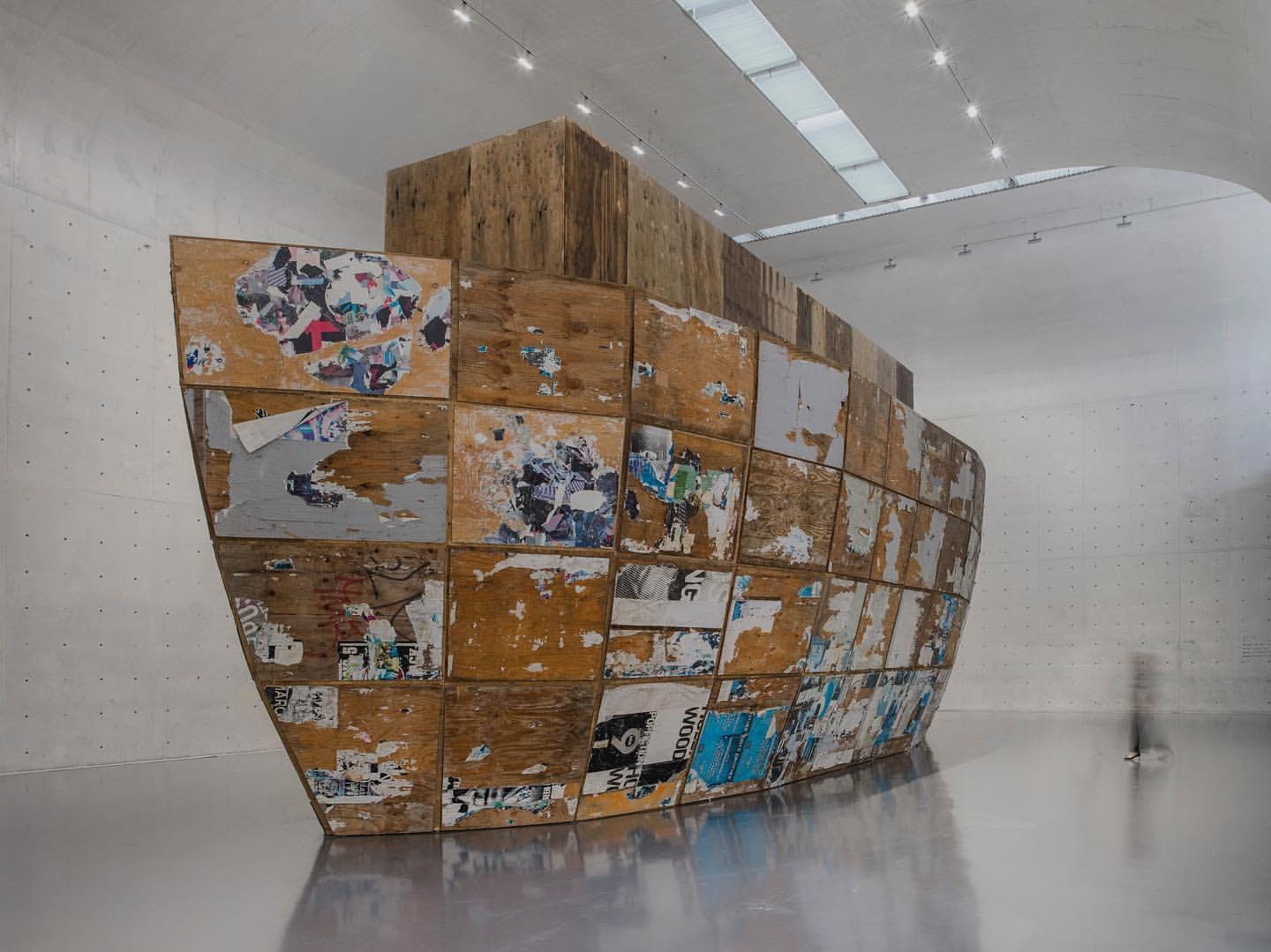
Mark Bradford’s practice has redefined the use of found materials in contemporary art, turning urban detritus into powerful social narratives. His work has inspired a new generation of artists interested in exploring the intersections of materiality, memory, and socio-political critique. As Art21 observes, Bradford’s innovative techniques transform everyday objects into symbols of resistance and renewal (Art21).
Beyond the art world, Bradford’s work has spurred broader conversations about urban renewal, economic disparity, and the politics of representation. His ability to extract beauty and meaning from what is discarded challenges viewers to reconsider the value of the seemingly mundane, affirming that every layer of the urban landscape holds a story. Major institutions such as MoMA, Tate, Whitney, and the Guggenheim continue to showcase his work, ensuring that his legacy endures as a significant force in contemporary art and cultural commentary.
Mark Bradford’s mixed-media practice transforms discarded urban materials into layered narratives that capture the complex intersections of race, class, and history. His early experiences in South Los Angeles, as highlighted by both Encyclopædia Britannica and the Whitney Museum’s artist page, instilled in him a desire to re-map the city’s social and physical landscapes—a theme that has become central to his art. Through his innovative techniques and powerful social commentary, Bradford challenges traditional aesthetics and redefines abstract painting. His work not only documents the urban experience but also offers a compelling vision for the future, proving that art can transform even the most overlooked materials into symbols of hope, resistance, and renewal.
References:
Mark Bradford. Encyclopædia Britannica, Encyclopædia Britannica, Inc., https://www.britannica.com/biography/Mark-Bradford. Accessed 13 Jan. 2025.
Mark Bradford. MoMA, Museum of Modern Art, https://www.moma.org/artists/7012. Accessed 13 Jan. 2025.
Mark Bradford. Tate, https://www.tate.org.uk/art/artists/mark-bradford-2733. Accessed 13 Jan. 2025.
MacArthur Fellows Program: Mark Bradford. MacArthur Foundation, https://www.macfound.org/fellows/992/. Accessed 13 Jan. 2025.
Mark Bradford. Art21, Art21, https://art21.org/artist/mark-bradford/. Accessed 13 Jan. 2025.
Mark Bradford. Whitney Museum of American Art, https://whitney.org/artists/3160. Accessed 13 Jan. 2025.
Mark Bradford. Guggenheim Museum, https://www.guggenheim.org/artwork/artist/mark-bradford. Accessed 13 Jan. 2025.
Steinhauer, Jill. Mark Bradford and the Urban Landscape. The New York Times, 15 May 2012, www.nytimes.com/2012/05/15/arts/design/mark-bradford-and-the-urban-landscape.html. Accessed 13 Jan. 2025.




Loved learning about this artist, he has remarkable talent and I hope to see his art one day in person. You are a very gifted writer yourself, I appreciate that. Write on my sister 💙
Scale is what makes this work sing. Seeing it in small pics on my phone just makes me want to scream because there is so much going on it needs to be viewed actual size. Wonderful synthesis of time and place. Thank you for sharing this— now when can we go on the field trip?!